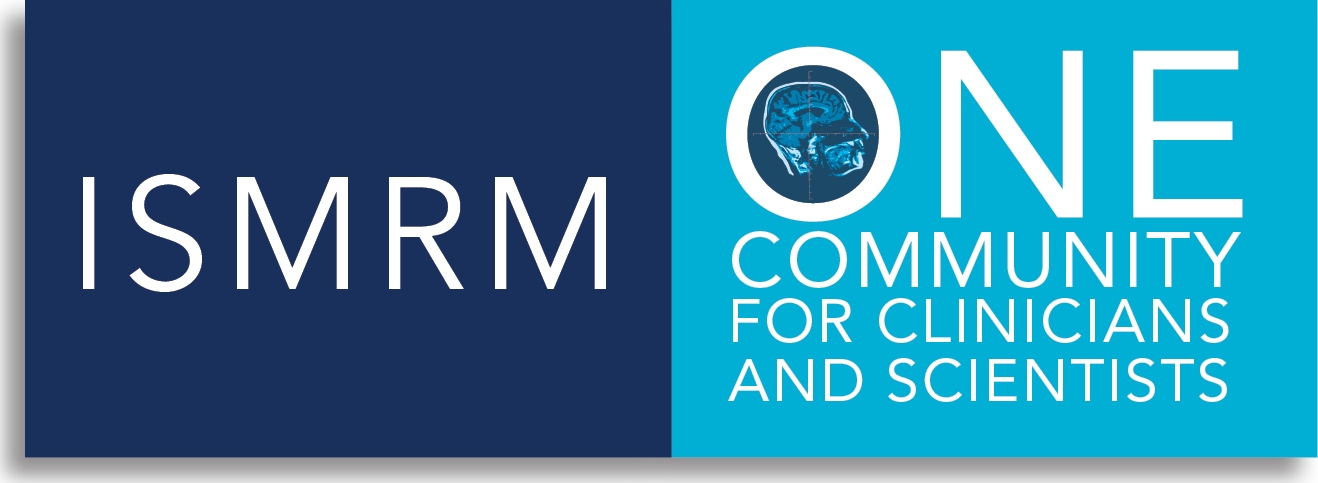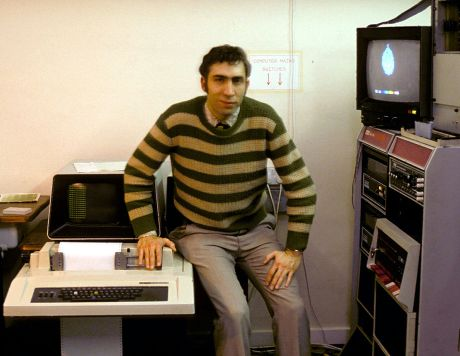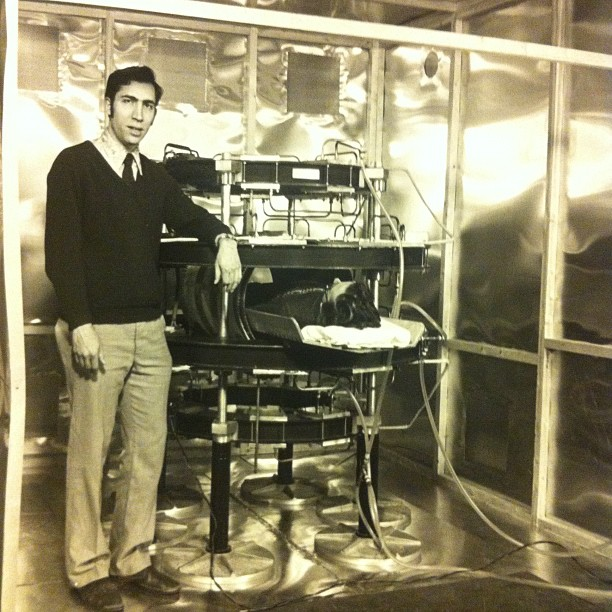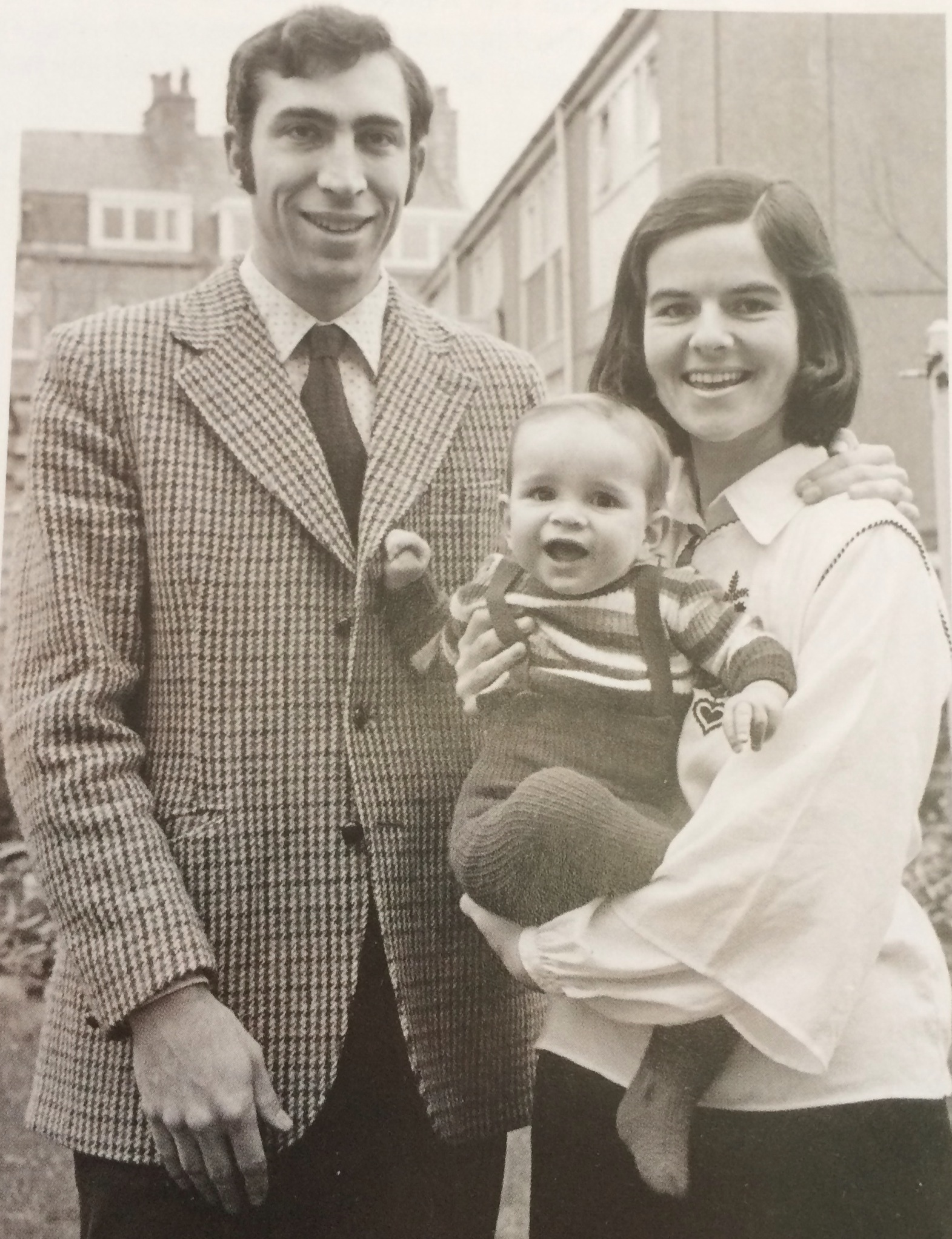|
|

|
||||
|
E-news from the |
|||||
|
Bill Edelstein in Aberdeen |
|||||
|
Many of you
will already be aware of the sad death of Bill Edelstein in
February 2014. Bill was a pioneer in our field and was
also a Gold Medal winner of the Society. Here, Jim
Hutchison, Tom Redpath and Glyn Johnson, co-authors on
Bill's seminal 1980 spin-warp paper, provide some
reminiscences of their time together in Aberdeen:
Recollections of Jim Hutchison, Tom Redpath and Glyn Johnson Bill, recently married to Fiona, arrived in Aberdeen in September 1977 to begin a post-doctoral position with Jim Hutchison in the Department of Biomedical Physics, University of Aberdeen. Following a BS in Physics from the University of Illinois, and a PhD from Harvard (coincidentally under the supervision of Robert Pound) Bill had spent three years as a post-doc at the University of Glasgow searching in vain for gravity waves. NMR imaging (Bill hated what he considered the nonsensical neologism, MRI) was another long shot but John Mallard had recently persuaded the UK Medical Research Council to give the Department £30,000 (a derisory £150,000 at current prices) to build a whole body scanner. Bill was absolutely the right person to join Jim on the project as he loved the challenge of devising elegant and, more important, cheap solutions to problems. He was very fond of a joke that Anatole Abragam had told him in relation to searching for gravity waves with limited resources: A man goes home from work and just as he reaches the bus stop he sees his bus pulling away. He chases the bus to the next stop but once again it pulls away without him. This continues all the way home where he tells his wife, “I’ve just chased the bus all the way home and saved £2.” Unimpressed, his wife responds, “Tomorrow, chase a taxi and save 20”. The love of a cheap solution did have its down side: Bill, never what one would call fashion forward, had a pair of jeans printed with the faces of famous historical figures. They were absolutely hideous but they had cost him less than a dollar and he was inordinately proud of them. Bill would no doubt have been delighted at the recent detection of gravitational waves but would probably have much preferred that they had been detected by a large chunk of iron in a Glasgow basement than by a multi-million dollar astrophysics observatory. At the time Bill arrived in Aberdeen the “scanner” consisted of little more than a 4-coil, air-cored electromagnet, driven by a highly unstable motor-generator. The magnet was the first whole body magnet built by Oxford Instruments and generated a field of 0.04T [sic] with homogeneity of about 200ppm [sic]. It was of rather more concern that during operation the coils reached temperatures of about 100°C. Who was responsible for this cock-up was a matter of dispute but Oxford refused to do anything about it and Jim and Bill’s first task was therefore to retrofit water cooling – a Heath Robinson affair (American: Rube Goldberg) of copper pipes and aluminium plates bolted to the coil formers which had to be lacquered since they were porous. (Oxford did admit that the electrical short one of the coils developed was their responsibility and the magnet had to be returned for repair.) The motor generator was another problem and was eventually replaced with a rather slick looking Hewlett-Packard power supply. Before buying the new supply Jim and Bill thought it would be prudent to measure the mains voltage available. This was a healthy Scottish 450V three-phase supply, not the wimpy American version, so came through a substantial junction box. Jim disabled the multiple interlocks, opened the box and Bill and he carefully approached the brass terminals with a multimeter. This is obviously not something to be undertaken lightly but is normally perfectly safe. Unless, that is, the multimeter is set to measure current as it was in this instance. There was an almighty bang and Jim and Bill leapt ten feet backwards. Luckily no one was hurt but the electrical components of the meter were vapourized. Jim and Bill were later joined by two graduate students: Glyn Johnson in 1978 and Tom Redpath one year later. Glyn spent his first year on building a variety of analogue electrical devices, something he proved extraordinarily bad at despite the expert tutelage of Bill and Jim. Glyn did contribute something during his first year: he hammered literally thousands of nails into a wooden frame to build a noise-excluding screened room around the magnet. This was another triumph of cost cutting by Bill. The straightforward way to build a screened room is to attach copper plates to a suitable metal frame and solder the joints. But copper is expensive. Aluminium is less expensive but doesn’t solder well. However, Bill found a source of aluminium solder and calculated that an RF-proof box could be constructed provided an electrical connection was made between the aluminium sheets every couple of centimeters. A local carpenter, Willie Hutcheon, was hired to build a wooden frame; Glyn nailed aluminium sheets to the frame, one brass nail every 2cm; and Bill followed, soldering over each nail with a blob of foul smelling aluminium solder. The amazing thing is that it worked and is still there in Aberdeen nearly 40 years later. At around this period Bill developed a passion for a TV program called The Great Egg Race. This was a series presented by Professor Heinz Wolff in which teams of three were given two hours to build a specified device from odd bits of wood, plastic, rubber tubing and gaffer tape. The show was named after the original challenge of building a vehicle powered by a single rubber band that would transport an egg the farthest distance without breaking. Somewhat to Jim and Glyn’s embarrassment (it is fair to say that neither are renowned for their exhibitionism) Bill insisted on forming a team. The three took the train to Manchester for the recording and were challenged to build a device to weigh a human being to an accuracy of within 5%. The hydraulic system they devised leaked badly, the estimated weight was out by 100% and they came last. Typically, Bill was upbeat and insisted that such a challenge was like a short sprint and had we been faced with the equivalent of a marathon we would undoubtedly have triumphed. Spin warp imaging is another result of Bill’s ingenuity at overcoming the limitations of available resources. Jim and Bill had realized that projection reconstruction, the favoured technique of the time, would never be feasible on the Aberdeen magnet and had therefore been working on line scanning approaches. Tom, at the beginning of his PhD, began to look at alternative approaches, of which there were many. One that caught his eye was a method by Peter Mansfield called Echo Planar Imaging which involved acquiring a signal while modulating one gradient in the presence of a constant orthogonal gradient. Mansfield argued that the Fourier transform of the signal would be a series of peaks owing to the well-known Fourier properties of the comb function. The continuous weaker orthogonal gradient would broaden each signal peak in frequency space encoding information in the second direction, such that a second Fourier transform would give a 2D image. This was several years before any clear formulation of k-space had been proposed and the paper was completely incomprehensible to most people, including Tom. In October 1979 Tom asked Bill to help him understand EPI and it is completely typical of Bill that rather than brush him off he went away and thought very hard about the paper. A couple of days later Bill came back and announced first, that the method proposed by Mansfield wouldn’t work because information would be encoded in opposite directions in alternate echoes; second that it could be made to work by reversing the sampling order in those echoes; third that it made more sense to blip the orthogonal gradient; fourth, that even then, the images would be poor because the signal was decaying with T2*; and fifth, that good images could be generated by acquiring a limited number – even one – echo per excitation provided the size of the initial blip was adjusted appropriately. To this was added Jim’s insight, based on his previous work on slice selection and frequency encoding, that it is necessary to apply negative gradients to center the signal in the sampling window. The final touch was for Jim’s wife Meg, a fine researcher in her own right and a big Star Trek fan, to name the method: Spin Warp. Spin warp still had to be demonstrated. The magnet, gradients and RF chain were all in place but all pulse waveforms were generated by analogue electronics and Jim undertook a major rewiring to produce the necessary gradient pulses. He completed the job in a remarkably short time (though Jim’s circuits, constructed in 3D with resistors and capacitors piggy-backed on top of each other, will never win any neatness awards) and the first spin warp image, with Jim as the subject was produced in early 1980. The data were acquired on the only computer in the department, a DEC PDP-11, which was in a different building and heavily overused. Consequently the experiment was performed late at night with wires trailing along the corridors between the magnet and computer rooms. During the four minute scan Jim fell asleep only to be awoken by Bill excitedly proclaiming “We’ve done it!” Jim subsequently added inversion recovery and the first results were presented at a conference in Tallahassee a few weeks later. Soon after, Frank Smith, a nuclear medicine consultant, took an interest in the project and arranged a few real patients to be scanned. The first patient, a terminal liver cancer case, was imaged on 29th August. The images clearly demonstrated the primary tumour but also metastases in the spleen and the spine which had not previously been suspected! Unfortunately, Bill’s funding lapsed in October 1980 and he returned to the US to take up a position with GE in Schenectady, about an hour’s drive from his birthplace, Gloversville, New York. Bill was no respecter of persons and would tell anyone, no matter how senior or distinguished, what they had got wrong. He could appear argumentative but only because he loved science and he thought it was important to get the right answers. He was completely without malice and far from not suffering them gladly he was always delighted to help fools, in the shape of dumb graduate students. He always said that his proudest achievement in Aberdeen was his son, Arthur. He was also a keen photographer and at every annual meeting of ISMRM and its predecessors he would greet old colleagues with the same cheesy joke: “Do you want to see some great images?” before pulling out photos of his family.
|
|||||




